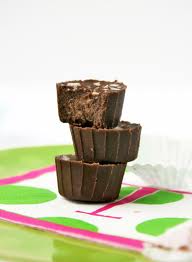
When my husband takes me out for dinner, I always look forward to trying out new foods and yummy dishes I don’t make at home. Inevitably he tries to persuade me to order a starter as well as a main course, which means by the time we get to the dessert menu, I am already comfortably full and really in no need for pudding!
However, once the waitperson has wafted the dessert menu under our noses, it doesn’t take much to convince me that “just a taste” or a spoonful of dessert would be nice. So I am usually very happy for hubby to order dessert for himself, as long as there are two spoons.
Now, greed aside, is there any benefit to sharing dessert? My husband would say no here. However he is very tolerant and has grown used to surreptitious scoops of his dessert disappearing over to my side of the table.
Which leads me to snacks.
Depending on which dietician you are listening to, some people say that snacking is bad, others will say if the snack is a healthy food, it isn’t an issue.
Does justifying your snack by choosing only to have “just a taste” work here?
A study from Cornell suggests small “bite” sized snacks can indeed be useful to help curb the desire to have a bigger portion.
The snacks used were chocolate chips, apple pies and potato chips.
Group A was given larger portions of snack food.
100g chocolate
200g apple pie
80g potato chips, all of which are all slightly larger than the recommended portion size and equalled a total of 1370 calories.
The portion sizes are usually found on the back of food packets along with the other nutritional information. But unless you were actively to weigh them out, I doubt that they would mean very much to the majority of people.
Group B was given
10g of chocolate
40g of apple pie
10g of potato chips
Which added up to a grand total of 195 calories. A big difference.
Both groups were advised they could eat as much as they liked of their allotted snack food without a time limit and asked to fill in questionnaires about whether they liked the food, if they were familiar with the particular snack and whether they found the food interesting or boring.
They were also asked to rate their hunger and craving before the food was presented and 15 minutes after the taste test ended.
What was interesting was that having the bite size portions actually did satisfy cravings and provided a similar sense of satisfaction to having eaten the snack as the larger portion.
Those given the bigger serves consumed 77% more food but experienced no difference in the level of satiety than those given the bite sizes.
What does this tell us?
That portion size matters.
So often (in many Australian restaurants at least) we are served up enormous portions of food on oversized plates, which might make us feel as if we are getting value for money, but in terms of satisfying hunger makes absolutely no difference as if we were served a more “normal” size portion.
Secondly eating a small snack, because it works effectively to curb hunger could actually help people to then eat less at the next meal.
So next time you are hungry and it’s not yet time for dinner, having a small snack will help to not only keep you going for longer, but assist in limiting your food take when dinner eventually is served.
The key though is to limit the amount of snack food consumed.
One handful of nuts doesn’t mean going back for the second!
And of course the snack foods are better if they are the brain healthy variety: nuts, seeds, yoghurt, fresh vegetable sticks, a slice of cheese or a piece of fruit.
Healthy foods help to create healthy brains for better thinking.
Ref:
Ellen van Kleef, Mitsuru Shimizu, Brian Wansink. Just a bite: Considerably smaller snack portions satisfy delayed hunger and craving. Food Quality and Preference, 2013; 27 (1): 96 DOI: 10.1016/j.foodqual.2012.06.008

